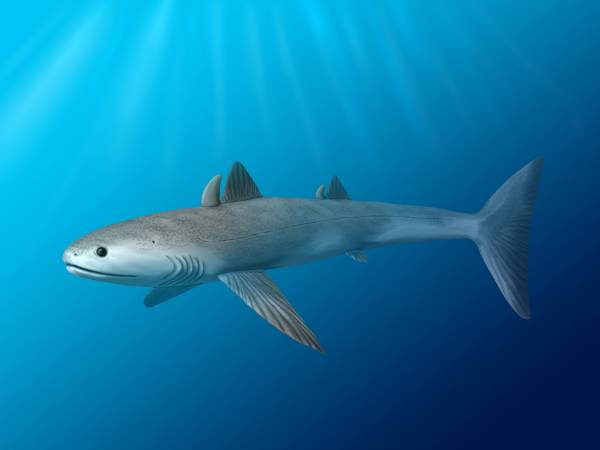Regarded as the first genus of shark, Cladoselache is a group of 8 recognized species, all from North America. These sharks are commonly called "scaleless sharks". They retain many ancestral characteristics including very fish-like heads and more than five gills (most modern sharks have five gills). The fins of these sharks possessed spines consisting of dentine and enamel, making them on of the strongest portions of the external surface of the body. The skin itself was almost entirely scaleless, possessing scales only near the eyes, mouth, fins, and portions of the tail. We know this because there are numerous exceptionally well-preserved members of the genus; so well preserved that we have internal organs such as the kidneys in the Cladoselache fossil record. Smaller muscles, a semi-scaled tail, and a semi-lunate shape that was nearly symmetrical all came together to form a lightweight, lower (than modern sharks) powered shark that was considered capable bursts of speed rather than maintained high speeds.
Those short bursts of speed would have been immensely important to these small ~ 1.8 m (5.9 ft) long sharks. They are known from the oceans that covered modern North America approximately 380 million years ago during the Devonian time period. At this time, the apex predator of these oceans was the giant placoderm (armored) fish Dunkleosteus. These first scaleless sharks were were on the menu for most of the time that Dunkleosteus ruled the oceans. However, the scaleless sharks diversified during this time and their descendants outlived Dunkleosteus and eventually became the apex predators we know today from these fairly humble fishy origins.



No comments:
Post a Comment